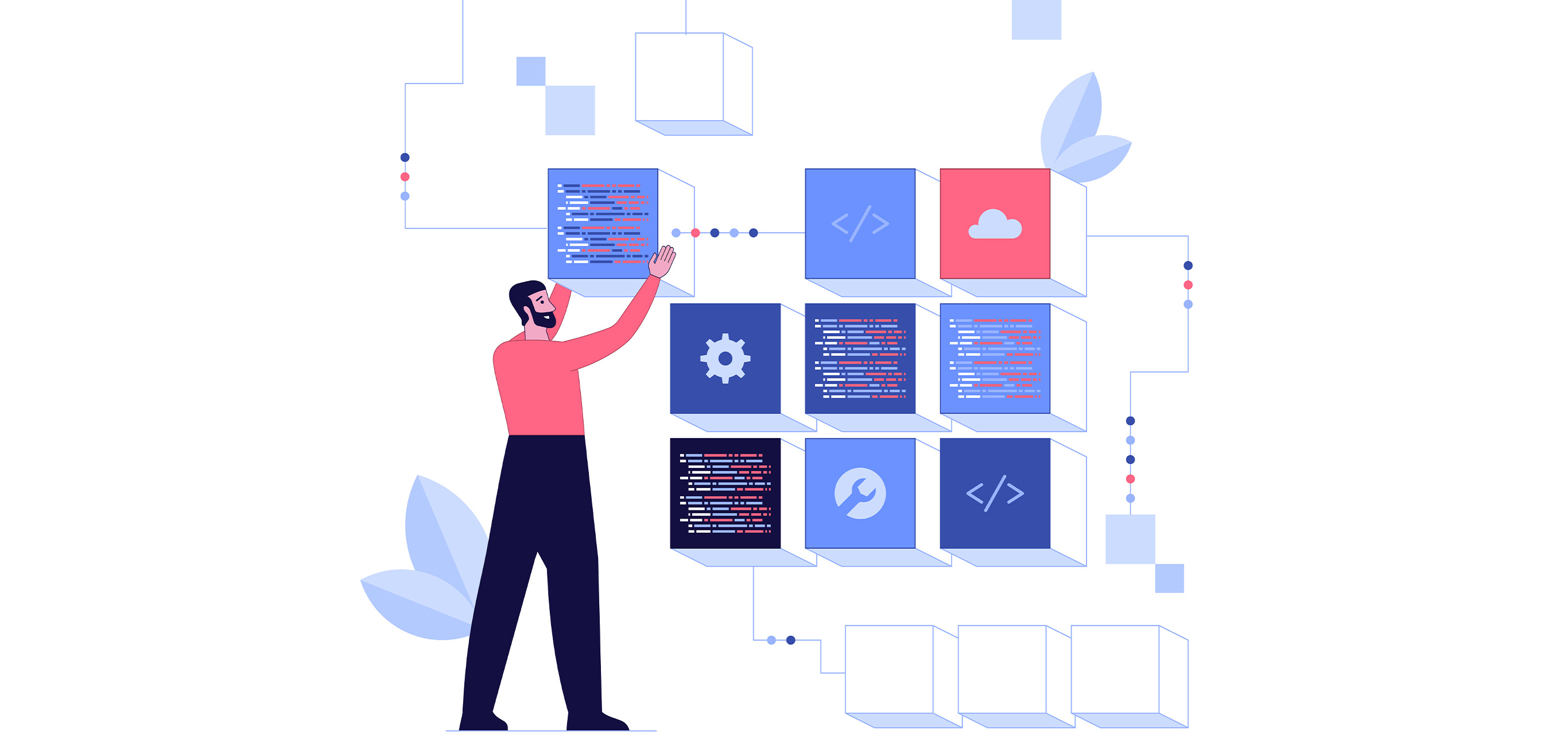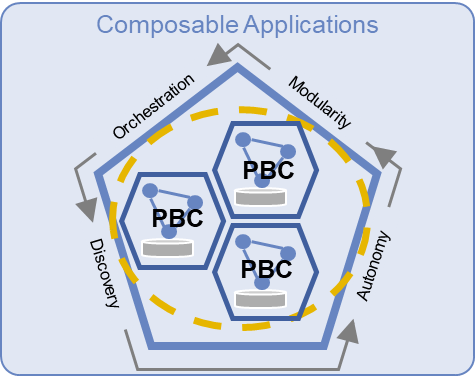
Composability: Its potential in Composable Business Architecture
An All-Encompassing Approach
In today's rapidly evolving digital landscape, businesses must not only adapt but also thrive amidst constant change. Composability, a transformative framework empowering organizations to construct, assemble, and reassemble various business elements, is at the heart of this agility. Think of it like building with LEGO blocks, but for businesses. Composability is the idea of creating a company that's flexible and can change quickly by using these "business LEGO blocks". This approach enables them to seize market opportunities, respond to disruptions, and enhance resilience. In this blog post, we will delve into the world of composability, exploring its definition, key areas, benefits, challenges, considerations, and best practices.
Composability extends beyond the digital realm; it encompasses diverse array of business elements, including capabilities, products, services, partnerships, and teams. Its scope spans from customer engagement to ecosystem partnerships and operations. Composability transcends technical modularity; it's about reimagining business and business capabilities. It's the art of constructing an organization using interchangeable building blocks.
The Dimensions of Composable Business Architecture
Composability is structured around three pivotal dimensions:
- Engagement Dimension: This dimension focuses on creating immersive experiences for customers, partners, and employees. It enables developers to concentrate on enhancing user experiences without getting entangled in infrastructure complexities.
- Technologies Dimension: Composable technologies are the backbone. Comprising modular components that can be easily assembled and reassembled, they provide the agility necessary to adapt to evolving business needs.
- Capabilities Dimension: This dimension involves crafting flexible and resilient structural capabilities that empower organizations to thrive in a dynamic business environment.
Our vision: Unlocking the Potential of Composability
Composability is an essential principle in modern cloud-based infrastructure, offering businesses a robust framework with a multitude of advantages. It aligns seamlessly with industry standards, providing highly available and redundant cloud resources that fortify security and compliance measures. This approach not only establishes a trusted environment but also minimizes vulnerabilities, fostering a secure operational landscape for businesses.
Furthermore, composability brings substantial resource efficiency, enabling organizations to optimize hardware and software resources efficiently. It allows for easy scalability, making it suitable for rapidly growing organizations or those with varying resource requirements. With agility and flexibility in resource management, IT teams can dynamically allocate and reallocate resources in response to changing business needs. The result is a frictionless implementation of new products and features.
Cost savings are another significant benefit of composability. By efficiently utilizing resources and avoiding over-provisioning, organizations can save on hardware and operational costs. Composable architecture can also lead to enhanced application performance, as resources are allocated to best suit the needs of each application. Simplified infrastructure management, software-defined interfaces, and reduced manual hardware management further streamline operations. Additionally, composability places a strong emphasis on "reuse." It enables organizations to break down their operations into reusable components called Packaged Business Components (PBCs, encapsulated software components that represent a well-defined business capability, are recognizable as such by a business user, and are packaged for programmatic access). Leveraging the reuse of PBCs leads to standardized offerings, accelerated delivery, and a substantial reduction in time-to-market and overall costs.

Composability empowers businesses by enhancing responsiveness, enabling tailored solutions, swift proof-of-concepts, and a "Fail Fast" approach. It boosts productivity through quick access to resources and robust support, while also accelerating speed to value by reducing procurement lead times and addressing bottlenecks. This agile framework ensures businesses adapt swiftly to market changes, innovate efficiently, and rapidly attain value, positioning them as leaders in the dynamic digital landscape.
Challenges and Considerations
Composability holds immense promise, but its adoption in large organizations is not without challenges. The complexity of implementing composable architecture often requires the introduction of new infrastructure, software, and skill sets, which can be daunting.
Large organizations may grapple with the integration of this paradigm into their existing infrastructure, especially if their cloud readiness is low. Moreover, bridging the skill gap among IT staff necessitates either re-skilling or hiring new talent, both of which can be time-consuming and costly endeavors. Additionally, the risk of vendor lock-in looms, as organizations may find themselves reliant on specific vendors' solutions, potentially limiting their flexibility in the long term. To mitigate this risk, promoting an open standard approach becomes crucial. Furthermore, the initial investment for transitioning to a composable architecture can be substantial, involving not only financial resources but also changes on the business side. Finally, large organizations must contend with the formidable challenge of change management, where cultural and organizational barriers may hinder the seamless adoption of this new architectural paradigm.
Best Practices
To successfully navigate the path of composability, organizations can adopt key best practices:
Best Practice 1: Deliberately Connect Experience and Operations
- Create connectivity across customers, partners, and employees.
- Break down internal silos to improve business alignment and empower decision-making.
- Drive customer experience with an ecosystem approach.
Best Practice 2: Find the Right Mix of Proprietary and Standard Platform Elements
- Begin with a clear understanding of intended business outcomes.
- Balance platform capability, connectivity, and control tradeoffs.
- Leverage industry-leading platforms to jump-start initiatives.
- Isolate custom development for areas that differentiate.
- Eliminate wasteful customization and prioritize critical needs.
Best Practice 3: Leverage Composability and AI For Real Business Results
- Replace old monolithic platforms with composable parts to enhance talent retention, delivery speed, and collaboration.
- Combine infrastructure with machine learning and analytics.
Conclusion
In an era defined by constant change and digital transformation, composability emerges as a beacon of hope for organizations seeking agility, resilience, and innovation. It's a philosophy that encompasses not only technical modularity but also a complete reimagining of business and capabilities. At NTT DATA, we see composability as the guiding principle in this dynamic landscape. Our vision is clear: composability is not just an idea but a practical framework that empowers businesses to thrive. Composability will be crucial in the near future to have leaner and more fluid organizations, capable of anticipating business needs and adapting to continuously changing market contexts which will have to be addressed by appropriately remodulating, and composing in new ways, the assets already in use. By embracing best practices, addressing challenges head-on, and leveraging our expertise, we can help organizations harness the true power of composability. This is the age of composability, where adaptability is the key to success, and we're here to help you unlock it.


